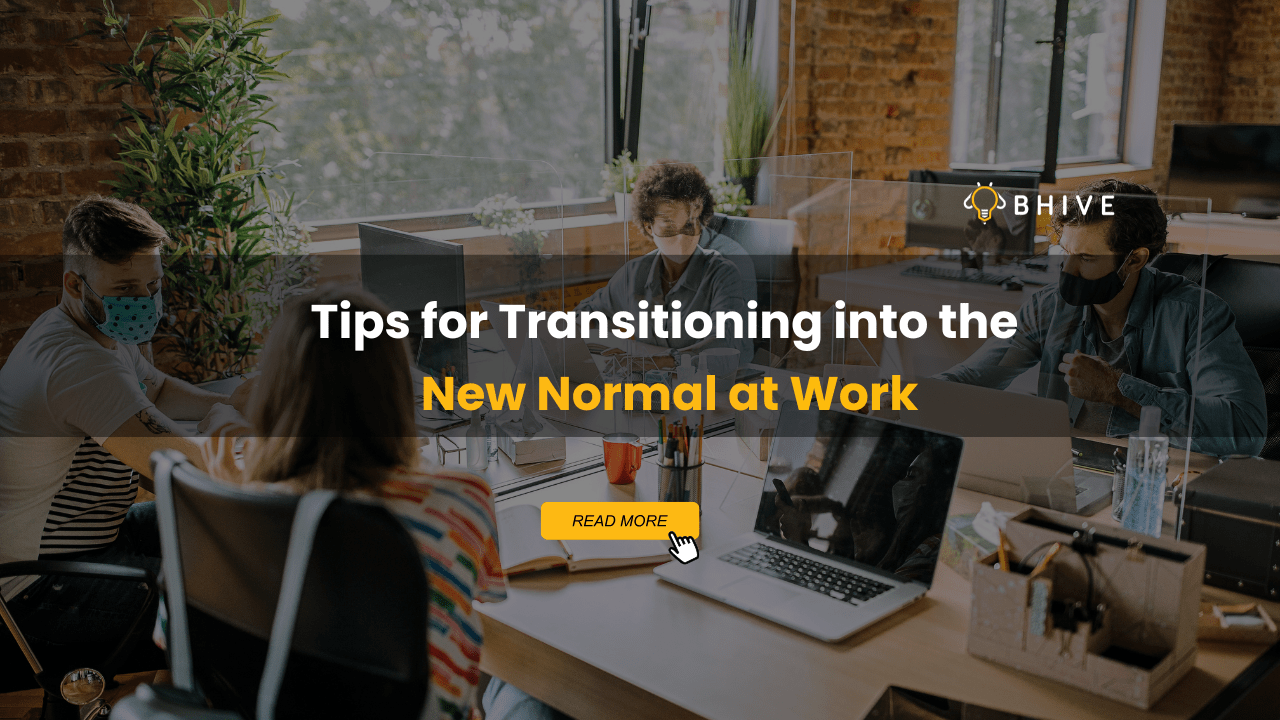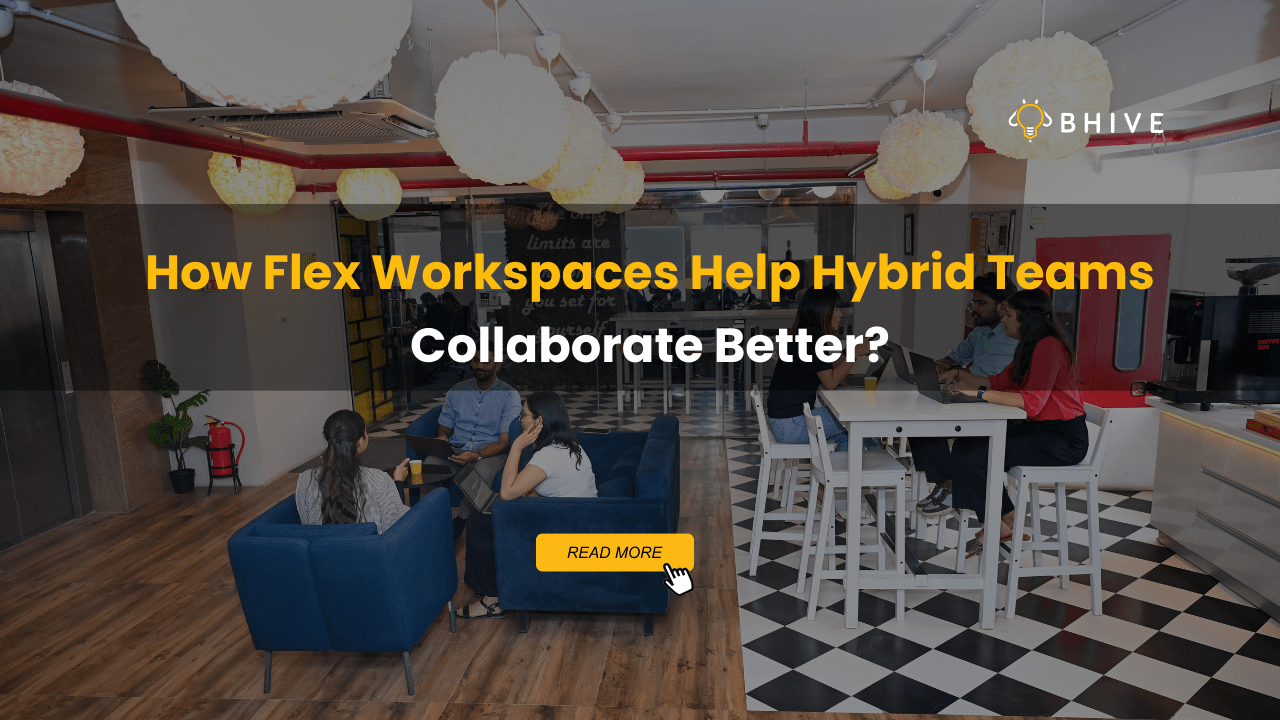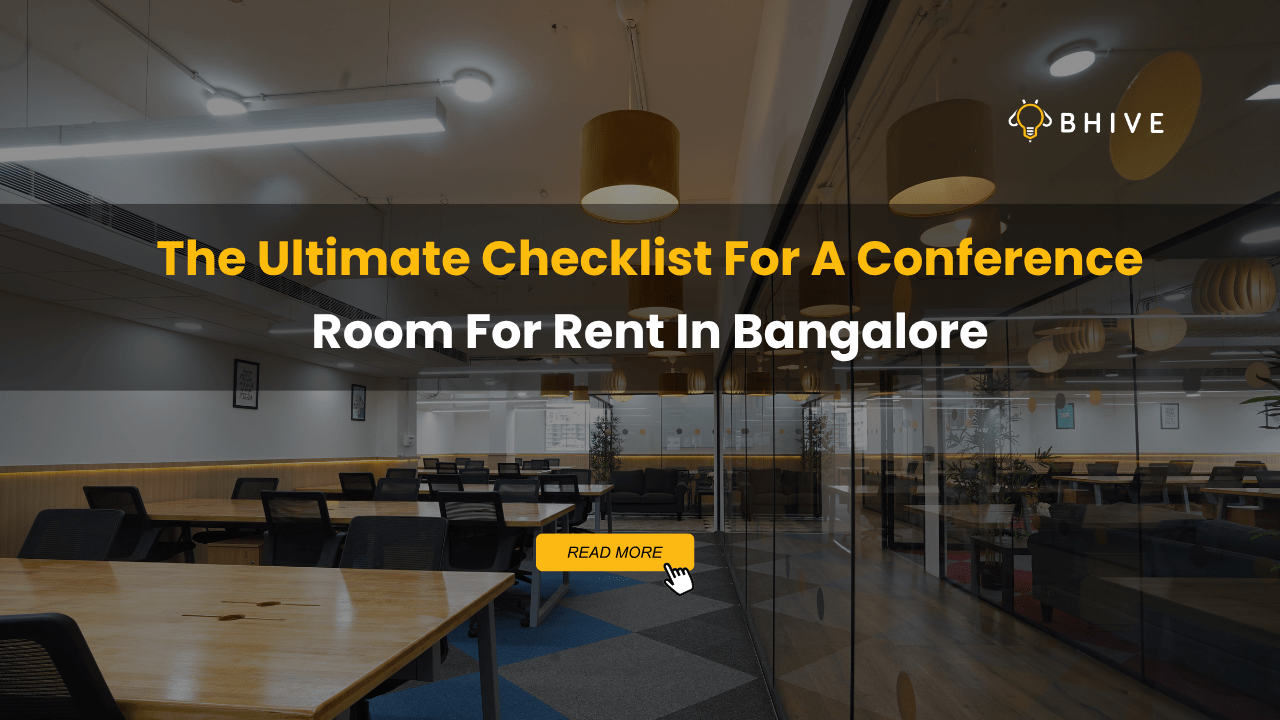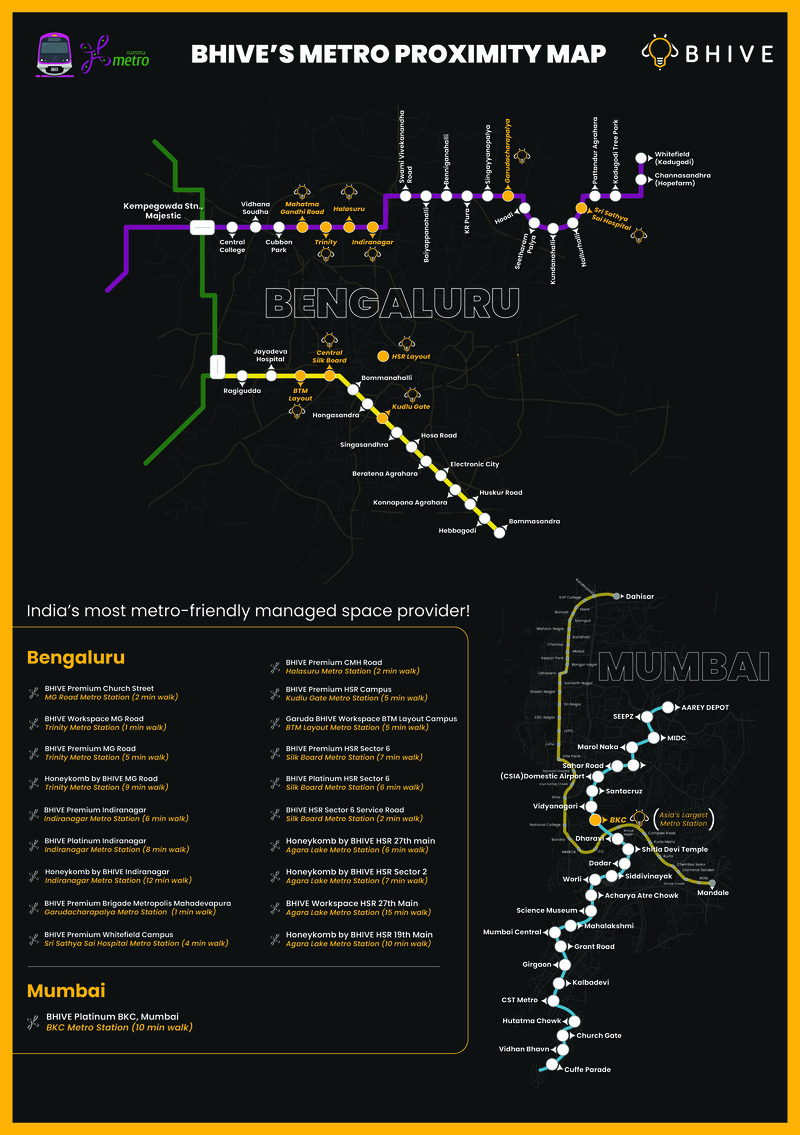Tips for Transitioning to the New Normal

You’re not alone if you have the same question. We have the same question. There are no tried-and-true playbooks since this is an unexpected situation. Since we are finally returning to the office, and we are all adjusting to this new normal at work, it entails both learning from others and a lot of unlearning as we go.
However, there are articles discussing this return to “business as usual.” In addition to a supplementary list of businesses that have published playbooks and blueprints for their own action plans, we are combining all of this information into five key findings.
Top Tips and Hack to Transition into New Normal at Work
As we are returning to the office, the old ways of office ethics too will change, and this calls for the new normal at work. From seating arrangements, transporting ways, work environment, etc. So, here are some back to work tips that’ll help you ensure a smooth transition.
These include office safety measures that have become a top priority in today’s working environment, hence these workplace transition strategies will come handy to you. So let’s get started.
Physical Office Revolution
Office space in the new normal at work will be very different, if the conversations are any guide. The open-office settings that have been so popular in recent decades will probably be abandoned.
However, contrary to what most people believe, the return to the office atmosphere isn’t always that simple. In actuality, this is less of a return to the hideous fabric-laden wall partitions that are so frequently mocked in popular culture, especially in the film workplace Space, and more of a progression of workplace design.
No, you don’t have to keep your staff in the dark. There are many creative minds driving the design of the “new” workplace, and this article from Business Insider, which includes precise drawings and schematics of how your future office can look, explains how COVID-19 acted as a catalyst for the development of a more effective office space.
There are many workplace management tools available that use data and algorithms to handle the tedious tasks for you, such as:
Maptician Flex – To determine the ideal desk arrangement, this program examines the actual layout of a workplace, including meeting rooms and hallways. Additionally, it offers a built-in contact-tracing mechanism to assist in identifying the people who are most at risk in the event that a colleague becomes unwell, as well as tools for staggering staff schedules.
Wisp by Gensler – This technology incorporates individualized human expertise where necessary and evaluates the current workspace layout to determine the best seating arrangement.
Salesforce’s Work.com – This technology consists of a dashboard with localized COVID-19 data and government guidelines, a shift-management algorithm, and a contact-tracing system. Because this product is written with open-architecture code, developers can design and build it as needed and share it with other people through a marketplace.
Suggested readings: The Rise in Demand for Hybrid Work and the Role of Coworking Spaces
Introduction of new equipment and supplies
The first stage in the returning to office best practices discussion is office arrangement. In order to minimize the spread of bacteria and viruses, employers and thought leaders are also discussing the implementation of new tools, supplies, and skills in offices.
For instance, all fixtures (buttons, door knobs, faucets, etc.) may be made low- or no-touch. Upon arrival, office visitors and staff will have access to handwashing stations and temperature checks. Masks and other facial coverings will be mandatory in some workplaces. Snacks and other all-in meal alternatives may be restricted or eliminated completely, and canteens may be closed or strictly regulated, which could negatively impact those who have the munchies.
Employers are considering office safety measures like movable or permanent barriers, sneeze guards, and movable walls in what is being called the “end of the open office” as we know it. Hand sanitizers are being discussed by employers at every workstation. Because copper is less favorable to germs, it may be used more frequently as a design element in office spaces. Additionally, during off-work hours, there will be more thorough cleaning and sanitization.
A Breath of Fresh Air
We may be in for brighter, more comfortable offices in the future, which is good news for anybody tired of the numbing drone of air returns, flickering fluorescent lights, and dead-air offices. Offices with open windows will have better ventilation and free airflow, and HEPA filters will be utilized more frequently. Ideally, the new normal says goodbye to sick-building syndrome once and for all. There will be more outdoor office space that can accept it, and offices will be built to receive more sunlight.
Change in Work Hours and Commutes
If 9 to 5 was already going to be obsolete, the pandemic might be the last straw for those sectors of the economy that don’t need to follow this schedule and simply do so out of habit. While many people already favor flexible work schedules and work-life balance, hot desking and spaced work days to lessen the number of employees in the office at any given time will probably become the norm as business returns to some form of the new normal.
Many people who must commute to the office will benefit from the reduced focus on the commute during rush hour that comes with spreading out work hours. Returning to office will be two benefits to workers traveling to and from work every day: a decrease in the average commute time, which hit a new record high of 27 minutes each way in the US in 2018. We won’t see nearly as many people crammed onto trains, buses, or even highways.
According to an IBM study, 28% of respondents who previously frequently used buses, subways, or trains stated they would use them less when the crisis ended, and 20% of respondents said they would no longer do so. Over 50% of respondents said they would curtail or perhaps do away with ridesharing (Uber, Lyft, etc.). In 2020, a startling 75% of respondents stated that they were less inclined to go to a live conference or trade exhibition.
An Increase in Remote Work
Remote work is the obvious go-to solution – and the most widely discussed one – to reduce the risk of COVID-19 contamination in the new world of work. GlobalWorkplaceAnalytics found numerous socio-economic benefits to offering remote work as an option or even shifting an entire company to a remote-first operation.
Even though the remote work trend has been gradually introduced across industries and economies for years – even decades or centuries – it’s still a new thing for many companies. But the COVID-19 crisis has been a catalyst to push that even further – with the pandemic being described as the “remote work tipping point” by TopTal in a detailed infographic of the history of remote work dating back to 1560.
The IBM study mentioned above notes that it’s not just a “nice to have” among employees – it’s a growing “must have” or an “expected to have”. A full 40% now expect their employer to offer remote work options when returning to office operations,and 75% would like to do it occasionally.
Additionally, 54% of workers prefer remote work. The benefits are obvious: no commute, more family time, more scheduling flexibility, less stress, etc. The focus on work-life integration—the capacity to set one’s own hours in order to succeed in both personal and professional spheres—is paramount.
Reducing the spread of COVID-19 is only one goal; another is to provide the employer with more real benefits. Compared to their in-office colleagues, remote workers work two more full weeks, traditional office space saves less money, and employee retention is higher. Let’s just assume that working remotely is here to stay.
Also read: Employee retention improvement with managed offices
The work, it is a-changin’
Your workplace will be greatly influenced, regardless of whether you are an employer or employee, hiring manager, recruiter, or HR manager. Crawling under a rock and expecting that after the COVID-19 issue is over, things would return to the new normal is pointless because it is unlikely to happen. We are embarking on a completely new professional journey.
This isn’t necessarily a scary realization; rather, think of it as a culmination of the advancements that will occur over the next five years in a matter of months. Vladimir Lenin, a Russian revolutionary, is credited as saying, “There are decades where nothing happens; and there are weeks when decades happen.”
These are the weeks where, in a sense, decades are unfolding. One thing that will never change is that we will continue to do business in one way or another, so as an employer or HR manager, you should strive to prepare as much as you can. The health and office safety measures for your employees—whether it be their physical, mental, or financial well-being—is ultimately what counts, and you and your staff will benefit much from considering some or all of the aforementioned lessons.
KPMG
Irish financial services company KPMG shared a PDF of their return-to-office plan, with step-by-step details on:
- Returning employees to essential mitigation strategies (physical distancing, PPEs, office cleaning and hygiene, and access controls) gradually and in phases
- Preventive steps and travel precautions for meetings, conferences, and events
- Getting ready to integrate technology
KPMG also included guidelines on communications and compliance in what they ultimately called the “New Reality”.
Gen Z’s Embracing Hybrid Work Cultural
According to RPG Group research, 64% of Gen Z in India prefers organizations offering flexible work options. The results of a study conducted by the well-known Indian conglomerate RPG Group, which involved 13 cities and more than 4000 working professionals, students, and interns between the ages of 18 and 25, the vast majority of Gen Z employees prefer to work for companies that offer them flexible work arrangements. (Reference: EconomicTimes)
As per a study conducted in collaboration with Yuvaa Insights Studio, 64% of Gen Zers desire flexible employment arrangements. Additionally, research reveals that 61% of respondents would take a lower salary in exchange for a workplace that prioritizes inclusion and mental wellness.
GenZ’s also prioritize mental wellness (49%), have a personalized workspace (47%), have no dress code (49%), have menstruation leaves (42%), have effective harassment policies (44%), and have office transportation (51%).
Conclusion
Returning to the office in the “new normal” is a multifaceted challenge that requires careful planning and adaptability. From rethinking office layouts and embracing remote work to prioritizing safety measures and flexible schedules, organizations must focus on creating a workplace that is not only functional but also supports employee well-being.
By implementing these strategies, businesses can transition smoothly while fostering productivity, innovation, and a positive work culture. This period of change is also an opportunity to redefine the workplace and make it more inclusive, sustainable, and future-ready.
How BHIVE is taking office safety measures?
BHIVE is committed to ensuring the safety of its members as they return to the office. Stringent sanitization protocols are in place, with regular cleaning of shared spaces and high-touch areas. The office layouts have been optimized for physical distancing, and hand sanitizers are accessible at every corner. BHIVE also conducts health checks, encourages mask usage, and provides guidance on maintaining a safe and hygienic environment. By prioritizing these measures, BHIVE ensures a secure and productive workspace for all.
Companies should focus on clear communication, phased returns, flexible policies, and leveraging technology to manage the transition effectively. Providing mental health resources and emphasizing inclusivity is also crucial during this period.
FAQs
The “new normal” refers to the adaptations organizations are making in response to COVID-19, including enhanced safety measures, flexible work arrangements, and hybrid office models to ensure productivity and well-being.
Businesses can ensure safety by redesigning office layouts for physical distancing, implementing health protocols like regular sanitization and temperature checks, and providing personal protective equipment (PPE) for employees.
Yes, remote work is expected to remain a key part of the workplace. Many organizations are adopting hybrid models, allowing employees to work from home part-time while maintaining an office presence.
Employees should prioritize personal safety by adhering to workplace guidelines, maintain open communication with their employers, and adjust their schedules to accommodate new workflows or hybrid arrangements.5. How should companies handle the transition to the new normal?








